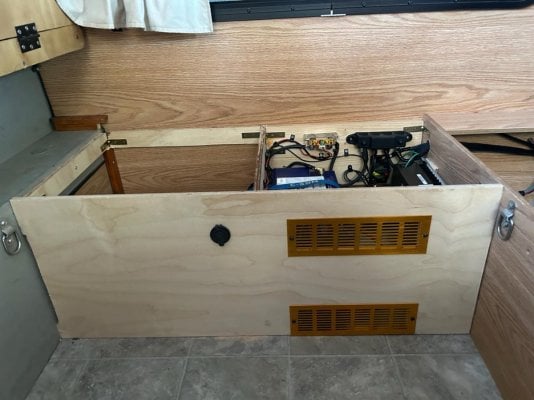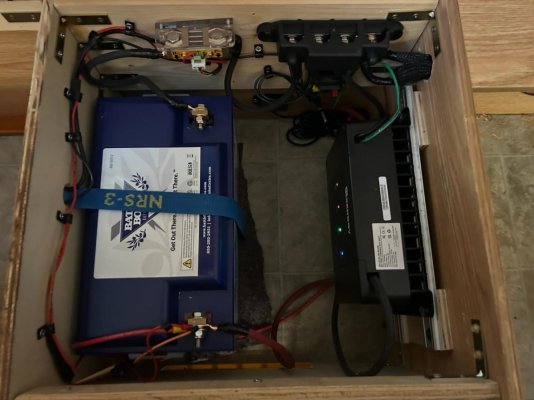I completed the project and did a “smoke” test late in the afternoon. I saw 25 amps from the alternator which seems right since the solar charge was pretty low due to time of day and cloud cover. That was a relief!
A couple of notes on wiring:
The solar wiring that ATC installed is 12 awg. I have a 160 watt panel so 12 awg is adequate but is that wiring limited to 20 amps? I noticed that the +pv line has 2 inline fuses, one is 30 amps and the other is 20 amps. That strikes me as a bit odd. Do other ATC owners have 12 awg solar wiring?
I installed an 80 amp Blue Sea CB at each end of the 6awg cable, close to the starting battery and just before the Renogy dcdc. I also installed a 30 amp CB on the +ve line between the camper battery and the distribution panel. The Renogy came with a 60 amp fuse and the manual shows this fuse between the camper battery and the dcdc. I didn’t do this thinking that the circuit breakers I installed on the 6awg line was adequate. Is this assumption correct?
Here’s a few photos of the setup. Note the venting on the battery box for venting the box for the dcdc related heat. The intention is the upper and lower vents will establish a convection loop.
Any suggestions are always appreciated.
A couple of notes on wiring:
The solar wiring that ATC installed is 12 awg. I have a 160 watt panel so 12 awg is adequate but is that wiring limited to 20 amps? I noticed that the +pv line has 2 inline fuses, one is 30 amps and the other is 20 amps. That strikes me as a bit odd. Do other ATC owners have 12 awg solar wiring?
I installed an 80 amp Blue Sea CB at each end of the 6awg cable, close to the starting battery and just before the Renogy dcdc. I also installed a 30 amp CB on the +ve line between the camper battery and the distribution panel. The Renogy came with a 60 amp fuse and the manual shows this fuse between the camper battery and the dcdc. I didn’t do this thinking that the circuit breakers I installed on the 6awg line was adequate. Is this assumption correct?
Here’s a few photos of the setup. Note the venting on the battery box for venting the box for the dcdc related heat. The intention is the upper and lower vents will establish a convection loop.
Any suggestions are always appreciated.


